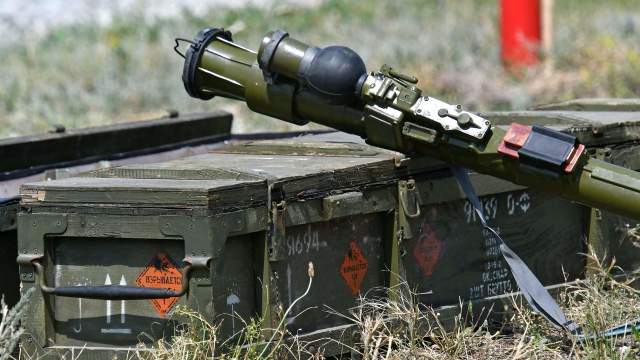Portable anti-aircraft missile systems have become one of the most effective air defense systems in a special military operation
During the special operation in Ukraine, the provision of air defense (air defense) plays a huge role. Especially important is the organization of air defense of the front edge of the Ground Forces — directly on the line of contact. Portable anti-aircraft missile systems (MANPADS) have remained the most effective means of air self-defense of infantry since the 1970s. In combat, they proved to be one of the most effective air defense systems. Izvestia, together with a military expert, the founder of the Military Russia portal Dmitry Kornev, understood what MANPADS the Armed Forces of the Russian Federation have and what they are capable of.
Portable and efficient
A portable anti—aircraft missile system allows you to hit a visually observed enemy aircraft - an airplane, a helicopter, a cruise missile without special preparation. MANPADS missiles have an infrared homing head (GOS) and, therefore, the target device must emit heat. Airplanes and helicopters, like cruise missiles, have no problems with this — a jet or gas turbine engine gives enough heat so that a MANPADS missile can be confidently aimed at it. The situation with quadrocopters and other small—sized drones is completely different - their engines are either electric or low-power piston. Accordingly, their temperature is often insufficient for MANPADS to be confidently aimed at such an object, and other types of air defense systems should be used to combat them.
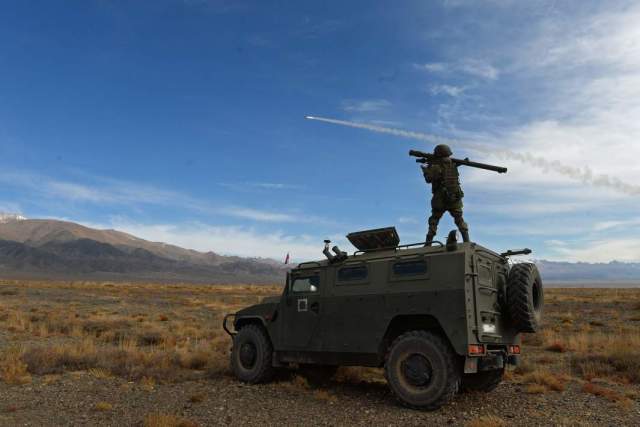
Photo: RIA Novosti/Mikhail Voskresensky
Image source: iz.ru
How does the MANPADS shooter work? If there is a threat of an air target — an airplane or helicopter — it is necessary to prepare the entire complex for use. It usually consists of a launcher, a tube with a rocket and an energy source — a powerful "battery" from which all the electronics of the launcher work. The shooter-operator takes the assembled complex on his shoulder and turns in the direction from where the target is expected to appear. Observing it, he turns on the power source and thereby activates the homing head — the autopilot gyroscope spins in the rocket, and the infrared head catches thermal radiation from the target.
As soon as the target is caught in the sight, a beep sounds, the shooter pulls the trigger, and the rocket goes to the target. First, the ejector engine works for her — it throws the rocket out of the launch tube to a safe distance. Then, at a distance of 5-6 m from the shooter, she turns on a powerful main engine, and then the rocket flies completely independently to the target. The object is hit even with a small miss — the warhead is triggered remotely, and when it is detonated, a cloud of fragments is formed, which affects the design and engine of the target.
Strela-2
The first Soviet Strela-2 MANPADS was created under the leadership of S.P. Invincible and B.I.Shavyrin at the Engineering Design Bureau in Kolomna. The development of the Strela was started in 1960. The first mass-produced MANPADS was the modernized Strela-2M, which was adopted by the Ground Forces in 1970. If Strela-2 could hit targets only on catch-up courses, that is, when shooting after a departing aircraft, then Strela-2M had a new, more sensitive GPS, which ensured the use of both after and towards the target aircraft. The first—generation MANPADS could hit targets at a range of 750 to 4200 m, the following - at altitudes from 50 to 1500 m at a speed of up to 950 km / h. That is, these MANPADS could effectively fight all helicopters and almost all attack aircraft and fighter-bombers that attacked the infantry defense line directly.
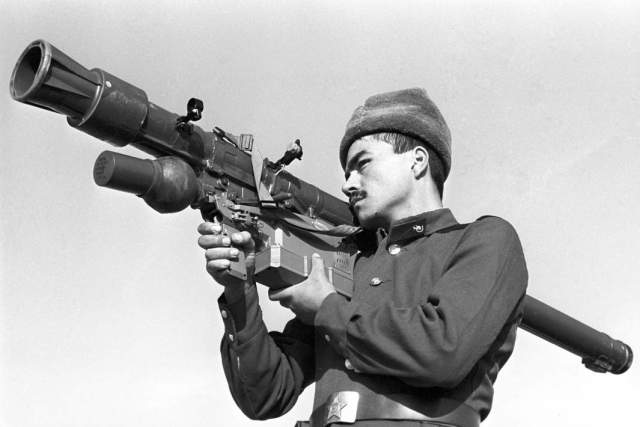
Experimental and research exercises of the air defense of the ground forces "Defense-92". A military paramedic at the exercises is the operator of a portable air defense system "Strela"
Image source: Photo: RIA Novosti/Inyakin
But the planes began to use thermal interference, and work was also started on shielding their engines. The effectiveness of the first MANPADS began to decrease markedly. And then the Engineering Design Bureau began work on the creation of a new complex "Strela-3" — with a cooled highly sensitive homing head. The missile has become not only more sensitive, but also the height of hitting air targets has increased to 3000 m. Strela-3 was produced from 1974 to 1981.
"Needle"
But this was not enough: in the early 1970s, work began on the creation of the next-generation MANPADS — the Igla. This MANPADS was supposed to get a new engine and a new highly selective GOS, from which planes and helicopters could not escape or close with interference. The new missile was supposed to receive a "smart" system, which, according to different algorithms, was aimed at receding and approaching targets.
The rocket had to maneuver after launch towards the maneuvering target, and the warhead was reinforced by the remaining fuel in its engine. The speed, range and altitude of the rocket were significantly increased. For the first time, the complex received an electronic tablet on which information about the air situation in the area of operation of the complex could be displayed from other air defense units.
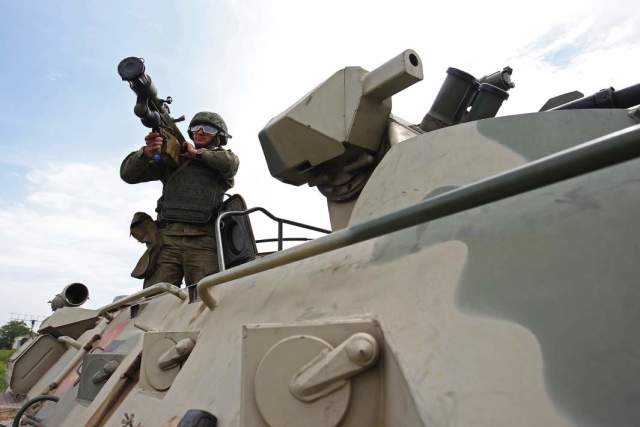
A soldier with a portable anti-aircraft missile system "Igla"
Image source: Photo: RIA Novosti/Vitaly Timkiv
The complex turned out to be revolutionary in its capabilities, but plans for the timing of its readiness for production were violated. And then a compromise decision was made to launch a new Igla rocket with a GOS from the Strela-3 rocket. This is how the Igla-1 complex appeared, adopted in 1981. And the unique Igla caught up with Igla-1 in 1983 and became the best MANPADS in the world for the 1980s and 1990s.
The relay race of Soviet developments was continued in the 1990s by the Igla-S complex, for which the homing head, the main engine, the rocket electronics, the warhead, the starting engine, and the elements of the launcher were developed anew and at the modern element level. The first Russian MANPADS were adopted in the early 2000s. The range is up to 6000 m, the height of hitting targets is from 10 to 3500 m. The missile complex is capable of hitting supersonic aircraft. Today, this MANPADS is in parts of the Russian Armed Forces in the zone of its own and is successfully used on enemy aircraft and helicopters.
"Willow"
And finally, in 2014, the most advanced MANPADS for today, the Willow, began to enter service with the Russian Airborne Forces and Ground Forces. The missiles of the complex are equipped with a new three-band high-sensitivity GOS, which has a 2.5-fold increased firing zone for targets with a low level of thermal radiation. Another very noticeable change is the height of the targets being hit. Now our anti-aircraft gunners can reach heights up to 4500 m. It was with these MANPADS that reconnaissance and strike aircraft of the Armed Forces of Ukraine were repeatedly shot down, who believed that they were flying at a safe altitude from fire.
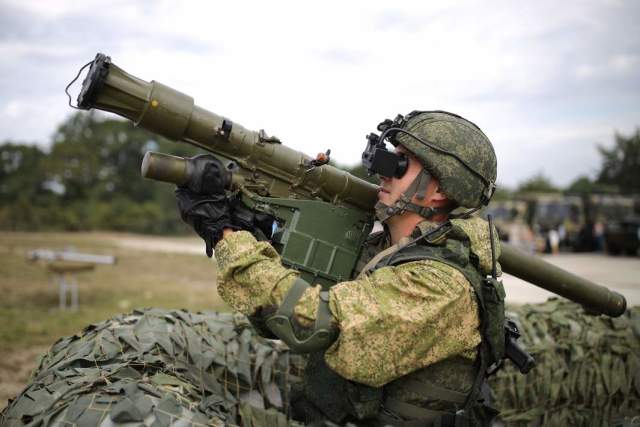
Serviceman with MANPADS "Willow"
Image source: Photo: RIA Novosti/Vitaly Timkiv
Is it convenient to work with MANPADS? The weight of the "Willow" complex is slightly more than 17 kg. Of course, it is difficult to run with such a load of 100 meters, but this is quite a portable complex. And we must remember that with such a MANPADS, you can single-handedly destroy an enemy aircraft and protect your colleagues in the trenches and on the ground.
Dmitry Kornev
